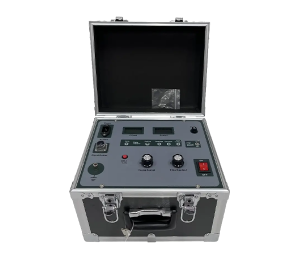 English
English



-
 Afrikaans
Afrikaans -
 Albanian
Albanian -
 Amharic
Amharic -
 Arabic
Arabic -
 Armenian
Armenian -
 Azerbaijani
Azerbaijani -
 Basque
Basque -
 Belarusian
Belarusian -
 Bengali
Bengali -
 Bosnian
Bosnian -
 Bulgarian
Bulgarian -
 Catalan
Catalan -
 Cebuano
Cebuano -
 China
China -
 China (Taiwan)
China (Taiwan) -
 Corsican
Corsican -
 Croatian
Croatian -
 Czech
Czech -
 Danish
Danish -
 Dutch
Dutch -
 English
English -
 Esperanto
Esperanto -
 Estonian
Estonian -
 Finnish
Finnish -
 French
French -
 Frisian
Frisian -
 Galician
Galician -
 Georgian
Georgian -
 German
German -
 Greek
Greek -
 Gujarati
Gujarati -
 Haitian Creole
Haitian Creole -
 hausa
hausa -
 hawaiian
hawaiian -
 Hebrew
Hebrew -
 Hindi
Hindi -
 Miao
Miao -
 Hungarian
Hungarian -
 Icelandic
Icelandic -
 igbo
igbo -
 Indonesian
Indonesian -
 irish
irish -
 Italian
Italian -
 Japanese
Japanese -
 Javanese
Javanese -
 Kannada
Kannada -
 kazakh
kazakh -
 Khmer
Khmer -
 Rwandese
Rwandese -
 Korean
Korean -
 Kurdish
Kurdish -
 Kyrgyz
Kyrgyz -
 Lao
Lao -
 Latin
Latin -
 Latvian
Latvian -
 Lithuanian
Lithuanian -
 Luxembourgish
Luxembourgish -
 Macedonian
Macedonian -
 Malgashi
Malgashi -
 Malay
Malay -
 Malayalam
Malayalam -
 Maltese
Maltese -
 Maori
Maori -
 Marathi
Marathi -
 Mongolian
Mongolian -
 Myanmar
Myanmar -
 Nepali
Nepali -
 Norwegian
Norwegian -
 Norwegian
Norwegian -
 Occitan
Occitan -
 Pashto
Pashto -
 Persian
Persian -
 Polish
Polish -
 Portuguese
Portuguese -
 Punjabi
Punjabi -
 Romanian
Romanian -
 Russian
Russian -
 Samoan
Samoan -
 Scottish Gaelic
Scottish Gaelic -
 Serbian
Serbian -
 Sesotho
Sesotho -
 Shona
Shona -
 Sindhi
Sindhi -
 Sinhala
Sinhala -
 Slovak
Slovak -
 Slovenian
Slovenian -
 Somali
Somali -
 Spanish
Spanish -
 Sundanese
Sundanese -
 Swahili
Swahili -
 Swedish
Swedish -
 Tagalog
Tagalog -
 Tajik
Tajik -
 Tamil
Tamil -
 Tatar
Tatar -
 Telugu
Telugu -
 Thai
Thai -
 Turkish
Turkish -
 Turkmen
Turkmen -
 Ukrainian
Ukrainian -
 Urdu
Urdu -
 Uighur
Uighur -
 Uzbek
Uzbek -
 Vietnamese
Vietnamese -
 Welsh
Welsh -
 Bantu
Bantu -
 Yiddish
Yiddish -
 Yoruba
Yoruba -
 Zulu
Zulu
Assessing the Dielectric Strength of Transformer Oil for Enhanced Performance and Safety
Testing the Dielectric Strength of Transformer Oil
Transformer oils play a crucial role in the electrical power distribution system. They not only serve as insulators but also dissipate heat generated during the operation of electrical transformers. The dielectric strength of transformer oil is a vital property that ensures efficient operation and prevents failures in electrical systems. Testing the dielectric strength of transformer oil is essential for maintaining its integrity and ensuring safe operation.
Understanding Dielectric Strength
Dielectric strength refers to the maximum electric field that a material can withstand without experiencing breakdown. For transformer oils, high dielectric strength means that the oil can effectively insulate the energized components of a transformer, preventing electrical discharges that could lead to catastrophic failures. The dielectric strength of transformer oil should ideally be above certain minimum levels to ensure safe operation.
Importance of Dielectric Strength Testing
Testing the dielectric strength of transformer oil is critical for several reasons
1. Safety Low dielectric strength increases the risk of electrical arcing, which can lead to transformer failure and pose safety hazards to personnel and equipment.
2. Efficiency A transformer operating with proper dielectric strength can maintain optimal performance, reducing energy losses and increasing the lifespan of the equipment.
3. Regulatory Compliance Many regions have stringent regulations regarding the quality of transformer oils. Regular testing helps utilities comply with these regulations and avoid potential penalties.
4. Preventative Maintenance Regular testing of dielectric strength is a proactive measure to identify potential issues before they become critical failures. This approach allows for timely maintenance and replacements, thus minimizing downtime.
test the dielectric strength of transformer oil

The Testing Process
The dielectric strength testing process typically involves a few steps
1. Sampling Oil samples should be taken from the transformer. It's essential to ensure that samples are representative of the entire oil volume and free from contamination.
2. Preparation The oil sample needs to be prepped for testing. This usually involves filtering out contaminants and allowing any gas bubbles to escape.
3. Testing Method The two most common testing methods for measuring dielectric strength are the ASTM D877 and ASTM D1816 methods
- ASTM D877 This method utilizes a gap of 2.5 mm between two electrodes, where the oil sample is subjected to voltage until breakdown occurs. The maximum voltage reached before breakdown is recorded as the dielectric strength. - ASTM D1816 This method employs a variable gap, which allows for results under different conditions. This method is more commonly used in modern analyses.
4. Result Interpretation The results are then analyzed to determine the dielectric strength of the oil. A value above the minimum specified by industry standards indicates acceptable dielectric properties. A failure below this threshold can indicate the need for oil replacement or further investigation into the transformer’s condition.
5. Record Keeping Keeping records of these tests is crucial for tracking the performance over time and addressing any developing issues.
Conclusion
Testing the dielectric strength of transformer oil is a fundamental aspect of transformer maintenance that cannot be overlooked. The integrity of the dielectric insulation in a transformer directly impacts its reliability and efficiency. Regular testing can prevent potential failures, ensuring that transformers operate safely within their designed parameters. As technology advances, so too do the methods for testing oil quality, providing power utilities with better tools for ensuring the reliability and safety of their electrical systems. By prioritizing dielectric strength testing, companies can protect their assets, enhance operational safety, and ensure compliance with industry standards.
-
Ensuring SF₆ Gas Safety: Introducing PUSH’s Integrated SF₆ Analyzer for Dew Point, Purity, and Decomposition MonitoringNewsJul.10,2025
-
Exploring the Main Types of Industrial Endoscopes and Their Applications Across IndustriesNewsJul.04,2025
-
Testing Equipment Industry Sees Major Advancements in 2025: Smart & Precision Technologies Lead the WayNewsJun.06,2025
-
Applications of Direct Current Generators in Renewable Energy SystemsNewsJun.05,2025
-
Hipot Tester Calibration and Accuracy GuidelinesNewsJun.05,2025
-
Digital Circuit Breaker Analyzer Features and BenefitsNewsJun.05,2025



